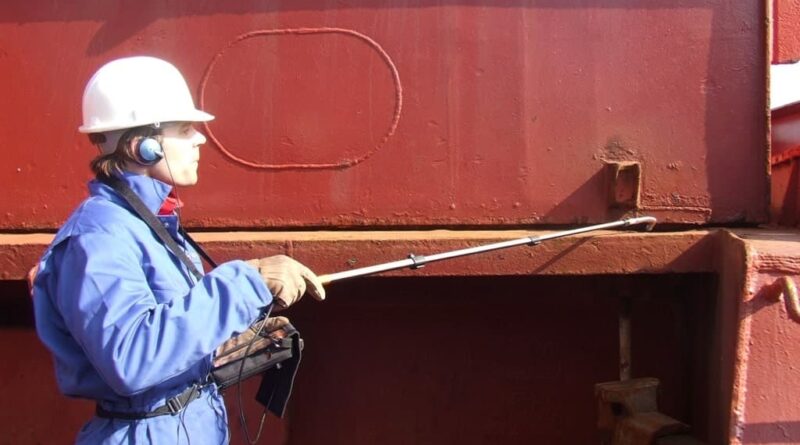Cygnus Instruments: Ensuring Hatch Cover Weathertightness for Maritime Safety
Hatch covers play a vital role in protecting the cargo hold of a ship from external environmental elements, particularly water. Weathertightness, which refers to a hatch cover’s ability to maintain a secure seal and prevent water ingress, is a crucial factor in ensuring both cargo safety and the vessel’s structural integrity. Given the maritime industry’s strict safety regulations and the significant risks associated with hatch cover failures, it’s essential for ship owners and operators to adopt effective inspection and maintenance practices. Cygnus Instruments, a leading provider of precision measurement tools, offers cutting-edge technology to help ensure hatch cover weathertightness, making it easier to detect potential leaks and maintain optimal operational safety.
The Importance of Hatch Cover Weathertightness
Weathertightness refers to the capability of hatch covers to keep water from entering the cargo hold. In the harsh conditions of the open sea, it is essential that hatch covers are fully sealed to prevent rain, seawater, or waves from causing damage to the cargo.
For cargo ships, a compromised hatch cover can result in various consequences, including:
- Cargo Damage: Water can severely damage sensitive goods, from perishable cargo like foodstuffs to electronics or chemicals. Even small amounts of water can ruin valuable products, leading to costly losses and operational disruptions.
- Corrosion and Hull Damage: Water ingress through faulty hatch covers can also damage the ship’s structure. Rust and corrosion of metal components may occur, weakening the vessel and increasing maintenance costs over time.
- Safety Risks: Leaking hatch covers can create hazardous conditions for the crew. The water can cause slippery decks, electrical failures, and potential flooding in the cargo hold, increasing the risk of accidents and compromising the vessel’s stability.
- Non-compliance with Regulations: International regulations, including those established by the International Maritime Organization (IMO), mandate vessels maintain watertight cargo holds. Failure to comply can result in fines, detention of the vessel, and damage to the company’s reputation.
- Operational Downtime: Unidentified hatch cover leaks can cause significant downtime, as ships need to be inspected, repaired, or reloaded. This results in delays, lost revenue, and additional operational costs.
Given these risks, ensuring hatch cover weathertightness is not optional—it is a critical part of the vessel’s ongoing safety and efficiency.
Common Causes of Hatch Cover Leaks
Despite regular maintenance, hatch covers are often subject to wear and tear, which can lead to leaks. Several factors contribute to the deterioration of hatch cover weathertightness:
- Seal Deterioration: Gaskets and seals degrade over time due to exposure to UV rays, saltwater, and environmental factors. Once seals lose their elasticity or become damaged, they are no longer effective in providing a water-tight seal.
- Misalignment or Deformation: Due to regular stress, weather conditions, or poor handling, hatch covers can become misaligned or deformed, leading to gaps that allow water to seep into the hold.
- Corrosion: Corrosion of the hatch cover’s frame or sealing surfaces can compromise its ability to seal tightly. If left unchecked, corrosion can lead to extensive structural damage.
- Improper Maintenance: If hatch covers are not maintained or inspected regularly, small issues can go undetected, turning into more significant problems. Regular checks are essential to maintaining hatch cover weathertightness.
Cygnus Instruments: Leading the Way in Hatch Cover Inspection
Cygnus Instruments is at the forefront of providing advanced ultrasonic leak detection technology to help ship owners and operators ensure hatch cover weathertightness. Their innovative solutions make it easier for vessel operators to identify potential issues before they cause significant damage or operational disruption.
1. Ultrasonic Leak Detection Technology
Cygnus Instruments’ ultrasonic leak detectors are one of the most effective methods for checking hatch cover weathertightness. Using high-frequency sound waves, these devices can detect even the smallest leaks in hatch covers by emitting sound waves that pass through the material. When these waves encounter a gap or crack in the seal, they are reflected back to the device, providing an indication of where the leak is occurring.
The key advantages of ultrasonic leak detection include:
- Non-Invasive Testing: Ultrasonic testing is a non-destructive method, meaning that it does not require any disassembly or alterations to the hatch cover. This makes it quick, easy, and cost-effective to perform inspections without causing any downtime.
- Accurate and Sensitive: Cygnus ultrasonic devices are designed to detect even the smallest leaks that might otherwise go unnoticed. This high sensitivity allows ship operators to address potential problems before they escalate into major issues.
- Real-Time Results: Ultrasonic testing provides instant feedback, allowing crew members to assess hatch cover weathertightness on the spot and take immediate action if necessary.
- Versatile and Portable: The ultrasonic devices are portable, robust, and simple to use, making them suitable for use on all types of vessels. Their versatility means they can be used to test multiple hatch covers quickly and efficiently during routine maintenance checks.
2. Ease of Use and Accessibility
Cygnus Instruments’ solutions are designed with user-friendliness in mind. The ultrasonic detectors are easy to operate, even for crew members without specialised technical training. Their simple interface and intuitive design ensure that inspections can be conducted by any onboard personnel, making it easy to incorporate regular testing into daily operations.
The portability of the devices allows for flexibility in testing, as crew members can move between hatch covers and access hard-to-reach areas without disruption to the vessel’s schedule. The equipment is also rugged, built to withstand the harsh conditions of the maritime environment, ensuring reliable performance in both calm and rough seas.
3. Comprehensive Reporting and Record Keeping
One of the key benefits of Cygnus Instruments’ ultrasonic leak detectors is their ability to generate detailed reports on hatch cover condition. These reports include data on the areas tested, the presence of any leaks, and recommendations for maintenance or repair. This detailed documentation is crucial for compliance with maritime regulations and can serve as evidence during inspections by regulatory authorities.
Regular reporting also allows ship operators to track the condition of hatch covers over time. By reviewing past inspection data, operators can identify patterns of wear or recurring issues and address them proactively, reducing the risk of unexpected failures.
Best Practices for Maintaining Hatch Cover Weathertightness
While Cygnus Instruments’ ultrasonic leak detectors are an essential tool for detecting and preventing leaks, regular maintenance practices are also vital to ensuring hatch cover weathertightness. Below are some best practices that ship operators should follow:
- Routine Inspections: Regularly inspect hatch covers, especially after rough weather or long voyages. Use Cygnus Instruments’ ultrasonic leak detectors for thorough, accurate testing during routine checks.
- Seal and Gasket Maintenance: Ensure that seals and gaskets are replaced when signs of wear or deterioration appear. Using high-quality materials designed for maritime conditions will help extend the lifespan of hatch covers.
- Proper Cleaning: Hatch covers and sealing surfaces should be kept clean and free from debris. Salt, dirt, or grime can interfere with the hatch cover’s ability to maintain a tight seal.
- Lubrication and Alignment: Ensure that all moving parts, such as hinges and locking mechanisms, are lubricated and aligned correctly. Misalignment can cause gaps in the hatch cover seal, leading to leaks.
- Training for Crew: Proper training for crew members is essential to ensuring hatch cover weathertightness. Train personnel on how to use ultrasonic leak detectors and how to maintain and repair hatch covers effectively.
Conclusion
Hatch cover weathertightness is crucial to protecting both the vessel and its cargo, ensuring the safety of the crew, and maintaining operational efficiency. Cygnus Instruments provides cutting-edge ultrasonic leak detection technology that allows ship operators to identify hatch cover leaks quickly and accurately, reducing the risk of water damage, corrosion, and safety hazards.
By combining innovative tools with regular maintenance and inspection practices, shipping companies can ensure that their vessels remain in compliance with international regulations, avoid costly repairs, and safeguard their cargo from potential damage. With Cygnus Instruments, ship owners and operators can confidently protect their assets and maintain high standards of safety and operational excellence on the high seas.




